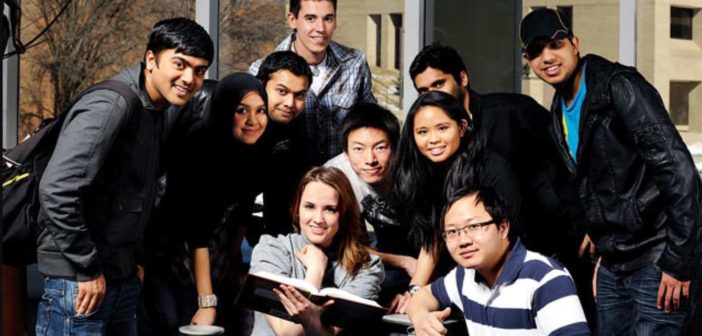As per government estimates, more than 1.33 million Indian students were pursuing their higher education abroad as of January 2024. With increasing numbers, there have also been reports of increased attacks on Indian students. However, lack of clarity in definitions and uniformity in reporting data on attacks is hampering the understanding of these trends.
With more than 1.33 million Indian students pursuing higher education abroad as of January 2024, Indian students form the largest cohort of international students worldwide, surpassing China. The United States remains a key destination, hosting over 330,000 Indian students, accounting for roughly 3 in 10 international students in the US in 2024. Indian students form the largest group of international students in Canada as well, with more than 4 lakh students pursuing higher studies there.
Between 2019 and 2024, the number of Indian students pursuing higher education abroad has almost doubled, rising from 6.75 lakh in 2019 to nearly 13.36 lakh in 2024. However, alongside this surge, concerns over the safety and security of Indian students have intensified. Reports of attacks on Indian students, particularly in the US, have raised alarm, with some incidents leading to death. The uncertainty has only deepened in 2025 as new challenges, including visa revocations and changing immigration policies, add to the anxieties faced by Indian students abroad. In this context, we examine the available data on attacks and fatalities involving Indian students in different countries.
Data from various parliament questions & answers provide data on attacks on Indian students abroad for the years 2013 to 2016 and 2020 to 2024. Information for 2017 is also available, but only up to November 2017. However, data for 2018 and 2019 are not available in these responses.
Attacks were reported from 9 countries in 2024
As per this data, Kyrgyzstan recorded the highest number of incidents in a single year, with 94 attacks in 2013 alone. The country also recorded another 8 attacks in the following 2 years. However, in recent years, Russia has seen a sharp increase, reporting 12 attacks in 2023 and 2 in 2024. Similarly, Germany recorded 11 attacks in 2024. USA recorded 4 attacks each in 2023 and 2024, while in the UK, 7 and 4 cases were reported, respectively. Italy reported 3 attacks in 2017 (as of November) and another 3 in 2024. Canada recorded 9 attacks in 2024, a significant jump from previous years. Meanwhile, countries like the Philippines, Ireland, and Iran, which had no incidents before, saw attacks in 2023 and 2024.
58 attacks resulted in 20 deaths between January 2019 and October 2024
According to another response, from January 2019 to October 2024, a total of 58 attacks on Indian students abroad were reported, resulting in 20 deaths. Canada (9 deaths) and the USA (7 deaths) recorded the highest fatalities, with every reported attack in these countries leading to a student’s death. While Russia (14 attacks) and the UK (12 attacks) had the highest number of incidents, they reported no and minimal fatalities, respectively. Australia, China, and Kyrgyzstan each recorded one student death, while Italy, Russia, Ireland, and Iran saw attacks but no fatalities. The data highlights North America as the most concerning region, accounting for 16 out of 20 deaths.
633 students died in 41 countries between 2019 and 2023 due to varied reasons
Similarly, another response in the Lok Sabha revealed that between 2019 and 2023, a total of 633 Indian students died in foreign countries due to various reasons, including natural causes, accidents and medical conditions. Canada and the USA alone accounted for 280 deaths, which is roughly 44% of the total reported deaths from 41 countries. In the same response, it is mentioned that a total of 19 students died in attacks, including nine from Canada, six from the USA and one each from Australia, China, Kyrgyzstan, and the UK, which is almost the same as the figures given in the previous response covering 2019 to 2024.
Lack of Uniformity & clarity in reported data
This data on attacks on Indian students is based on responses provided by the Ministry of External Affairs (MEA), which compiles information received from Indian Missions and Posts abroad. However, there is no uniformity or clarity on the specific criteria used to define and report such incidents, leaving ambiguity about what types of cases are included in the data. For instance, in one parliamentary response, these incidents were referred to as “violent attacks,” while in another, they are described as “instances of Indian students being harassed” or simply as “attacks on Indian students.” This inconsistency in terminology further adds to the lack of clarity in the reported data.
Going by a report by the BBC, at least 11 Indian or Indian origin students had died in attacks in the US in the first four months of 2024. The actual number of attacks and fatalities may be higher, as more cases may have surfaced over the rest of the year. This figure is significantly higher than the numbers reported by the government, underscoring the need for clearer definitions, standardized reporting criteria, and greater transparency in documenting such incidents.
Further, according to these responses, any complaints from Indian students studying overseas are addressed by taking them up with the concerned university, institution, or host government for appropriate action. In cases of serious incidents, Indian Missions and Posts engage with local authorities to ensure thorough investigations and that those responsible are held accountable.
Initiatives taken to ensure safety and security of Indian students abroad
In addition to this, the Indian Missions and Posts have rolled out measures to ensure the safety and security of Indian students abroad. These include maintaining regular contact with foreign governments, universities, Indian student associations, and community organizations to provide necessary support to students. Indian Student Welfare Officers have been designated in countries with large student populations. Students are encouraged to register with Indian Missions and on the MADAD Portal, ensuring better coordination in addressing grievances and emergency situations.
Indian Missions also operate 24×7 emergency helplines, listed on their websites and the MEA portal, to assist students in distress. Grievances are addressed through telephone calls, emails, social media, Open Houses, and in-person visits to embassies.
To ensure continuous support, senior embassy officials, including Heads of Indian Missions, visit foreign universities and educational institutions to interact directly with Indian students and student associations. Indian Missions also encourage students to stay connected with them regularly and prioritize addressing any concerns or grievances they may have.
Indian Missions also actively engage with newly enrolled Indian students to help them adjust to their new environment. Where possible, Welcome Ceremonies are organized to introduce students to the local Indian community and embassy officials. Additionally, Orientation Programs are conducted to inform students about potential challenges, safety concerns, and preventive measures they can take while studying abroad.
During emergencies or crises, Indian Missions take proactive steps to assist stranded students by providing food, shelter, and medical aid, and facilitating their return to India when necessary.



